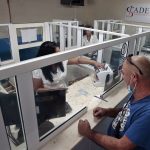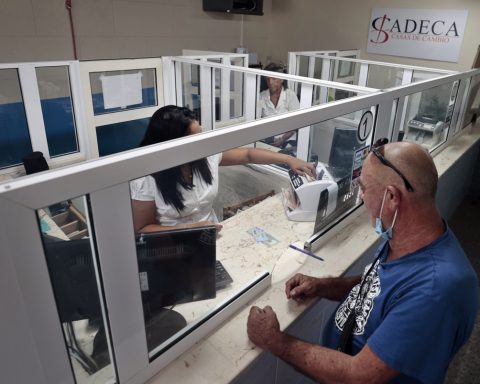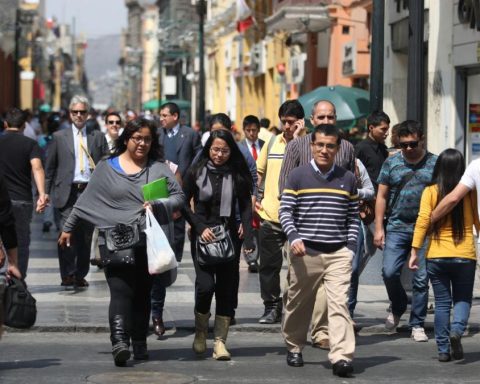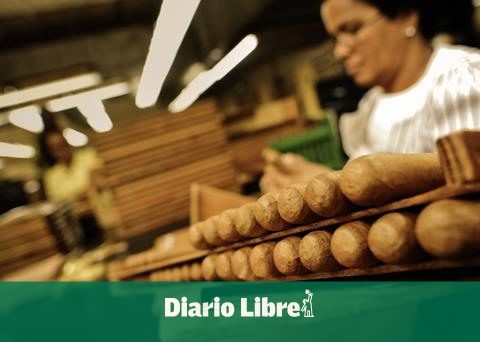The incorporation of another clause in agreements requires a new agreement between unions and employers. As reported by the Executive Branch, this negotiation covers some 300,000 workers in different sectors of activity at 88 tables.
A survey carried out by The Observer among existing agreements shows that eAdvance payment must be negotiated with cleaning companies, service stationsprofessional and non-professional accounting studies, hairdressersdry cleaners, green area workers, advertising agencies, customs brokers, real estate and property managementsports entities, union entities, social entities, livestock, agriculture and dairy workers.
Also on that list are wholesalers and warehouse importers, music houses, bookstores and stationery storesopticians, sale of motorcycles and spare parts, automotive spare parts, beverage transportationport operators and terminals, household waste collection and street sweeping, sanitation, mechanical workshops, exchange houses, ice production and cold storage, and the perfume industry.
To these are added the leather industry, clothingfootwear, textiles, balanced ration factories, industrial bakeriesyerba mills, oil mills, industrial catering, fish processing plants, hatcheries and sea farms, knitwear manufacturing and sawmills.
In those cases, the guidelines given by the Executive Branch were followed in their entirety or at least in part.. This implies, for example, that the corrections for inflation were only placed at 24 months (July 2023) as the Ministries of Economy and Labor had initially suggested in the official guidelines. Even there are agreements where the payment of the final corrective is tied to the evolution of the contributors in the period.
those who already have it
And there is another group of tables that andThey have incorporated a first corrective for past inflation for July because in the negotiation they did not comply with the official guideline and agreed outside. Having departed from the guideline also implies that in some cases there are established salary recovery percentages until 2023 greater than the 1.6% that the government proposed in its guidelines.
Apart from the six-monthly adjustments that differ according to the group, They already have assured the annual corrective agreements of trade sectors such as stores, supermarkets, household items, construction barracks, food retail, and chain stores and self-services.
So do the workers of domestic serviceindustrial ice cream parlors, salt mills, wheat mills, coffee and tea mills, liquor stores, beverages, noodle factories, refrigeration industry, sausage industry, graphic workshops, metallurgical, auto parts, plastic industry, savings and credit cooperatives, insurance companies, AFAP, forestry, horticulture, poultry farms and beekeeping. And in the case of private teaching corrections are every six months if necessary.
Why were there companies that validated agreements outside the guideline?
In the second half of last year, the Salary Councils already had as a background the doubts regarding compliance with the official projections of future inflation, and which were the basis of the nominal increase percentages proposed in the guidelines.
The guidelines presented in July 2021 assumed an inflation of 6% for the year ended June 2022. At the beginning of this year it was already at 8% and it is estimated that it will be around 9.5% in mid-2022, that is to say more three points above official estimates.
The unions were the first to question these goals and demand improvements. And with the passing of the months there were also companies that, to a certain extent, recognizing that inflation had a chance of being higher than projections they acceded to those requests and improve the content of the guidelines. So it was agreed to place more than one corrective as armor, for example. It is feasible that those paid in the middle of the year will be mostly between 2% and 3%.
It can also be thought that there were companies that agreed to get out of the guidelines because the impact of the pandemic on their numbers was not as important compared to others or because others were in the process of recovering and improving their margins. Another reasoning can be associated with the fact that there were cases in which some of the union proposals were accepted to prevent the clash with the unions from generating conflict at times of economic reactivation for thousands of companies throughout the country after the shock of the pandemic.
Construction and private banks
and in sectors highly affected by the pandemic (hotels, restaurants and travel agencies, among others)last year a new bridge agreement that expires on June 30 and that had a single adjustment of 3% in January 2022. These tables will have to negotiate a new agreement in the middle of the year.
















